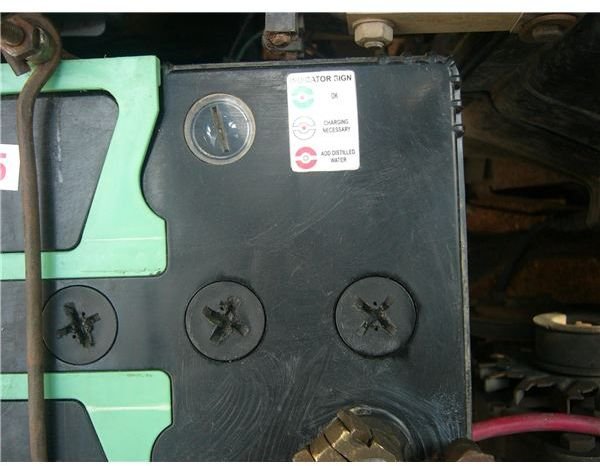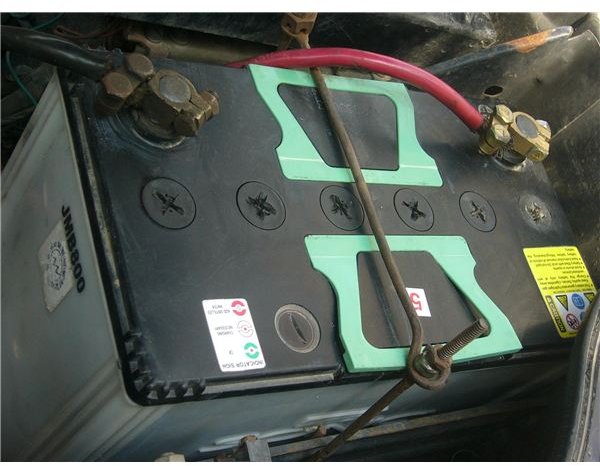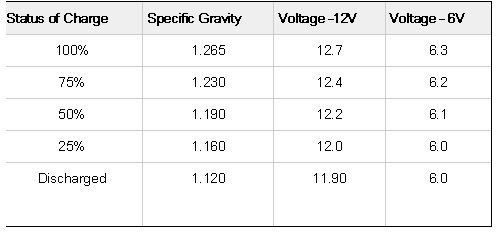Maintaining Car Batteries and Troubleshooting Charging Problems
In order to obtain the best reliability and performance from industrial and automobile batteries, proper maintenance is essential. A battery will survive longer and be more effective and reliable if you take care of it. Just like your bank account, if you keep taking out and deposit nothing back, then you soon will have nothing.
Basics of the Battery:
Batteries store Direct Current (DC) electrical energy in the form of chemical energy.
The lead acid battery is made up of plates, lead, and lead oxide with a 35% sulfuric acid (H2SO4) and 65% water solution.
The solution, or electrolyte, triggers a chemical reaction that generates electrons. A hydrometer tests the amount of sulfuric acid in the electrolyte. (A hydrometer is an instrument used to measure the specific gravity of liquids; i.e. comparing the ratio of the density of the liquid to the density of water.)
If electrons are less, then a hydrometer shows a low reading. When we recharge the battery, the sulfur returns to the electrolyte from the battery’s positive plates.
Generally battery lifespan may be from 6 months to 48 months, but barely 25% of all batteries live to 48 months.
Battery Types
- Starting (or Cranking): Designed to supply a quick surge of energy (as in starting engines) and have a greater plate count. The plates are thinner (more surface area) and have rather different material composition.
- Deep Cycle Battery: Designed to provide greater long-term energy delivery. Deep cycle batteries have a thicker plate design and can survive a greater number of deeper discharge cycles.
Does my Battery Need to be Recharged?
When the engine starter does not turn the engine on or the lights are dim, that means you have low battery. Difficult starting the engine because of slow cranking is also an indication of a flat battery.
If the battery is low, it needs to be recharged to restore full power and to prevent possible damage to the battery. The cell plates become sulfated if the battery is low or the battery is left in a discharged condition for several days. As sulfate builds up on plates, it reduces battery performance.
The charge level depends on the concentration of battery acid. The charge level can be checked with a hydrometer.
A hydrometer has a float contained in a glass vessel with a rubber bulb to draw the electrolyte into the tube. Some hydrometers have a number of colored balls in place of the single float, but reading the device is the same. The colored floating balls indicate a fully charged battery status, and no floating balls at all indicate a fully discharged battery.
Table for
**
1.265 (specific gravity) indicates a fully charged battery, 1.230 indicates a 75% charge, 1.190 indicates a 50% charge, 1.160 indicates a 25% charge and 1.120 or less indicates a discharged battery.
Some batteries contain a built-in hydrometer to indicate charge state. The charge indicator reads one cell as an average charge status for all battery cells. The hydrometer lens provides a visual indication of the condition of the electrolyte. A green circle indicates the battery is 75% or more charged and is okay. No dot (green ball not visible) means the battery is low and need be recharged. A clear or yellow indicator means the level of electrolyte inside has dropped too low.


On sealed batteries which do not have a built-in charge indicator, the status of charge can be determined by checking the battery’s open circuit voltage with a voltmeter. A reading of 12.70 volts indicates a fully charged battery; 12.40 volts is 75% charged, 12.20 volts is 50% charged, and 12.00 volts is 25% charged.
Why do You Need to Charge Your Battery Once a Month?
A battery discharges on a daily basis up to 0.5 to 1 % when kept idle. This rate of discharge increases when the climate is warm. To overcome this problem, disconnect the terminals of the battery when not in use for a long time.
Why do Cold Temperatures Cause Battery Problems?
A battery’s charging efficiency decreases in the winter season. Due to thick oil in cold weather, engines crank harder and this effectively increases the load on the battery.
What is a Normal Charge Rate?
Normally batteries of different capacities need different charge rates. Battery should be charged at a slow charge rate of 1/10 its given capacity. Car batteries generally take about 20 hours to gain full charge and two wheeler batteries take 10 hours on a trickle charge mode.
What is CCA, CA, AH and RC?
These are the standards specifications that battery manufacturer use to rate the output and capacity of a battery.
Cold cranking amps (CCA) is a measurement of the number of amps a battery can deliver at 0 ° F for 30 seconds and not drop below 7.2 volts.
CA is cranking amps measured at 32 ° F. This rating is also called marine cranking amps (MCA).
An amp hour (AH) is a rating normally found on deep cycle batteries. If a battery is rated at 200 amp hours, it will deliver 5 amps for 40 hours or 40 amps for 5 hours.
Reserve Capacity (RC) is the number of minutes a fully charged battery at 80 ° F will discharge 25 amps until the battery drops below 10.5 volts
Explanation of Battery Charging Stages
- Boost charging: This is the first stage in which the battery draws maximum current to raise the voltage up to 90%. Voltages range from 11 volts to 15 volts.
- Absorption Charging: The second stage in which voltage remains constant and current decreases slowly.
- Trickle charging: The third stage in which voltage is reduced to a lower level (12.5 to 13.5 volts) to reduce gassing. It is for keeping an already charged battery electrolyte healthy.
A Battery Maintenance Checklist
- Do regular inspection and maintenance, especially in hot weather.
- Always keep the electrolyte level between the lower and upper lines marked on the front side of the battery.
- Never allow the battery to remain in a discharged condition.
- Charge battery once a month.
- Keep the battery clean, dry, and free of dirt. Clean battery Terminals to prevent corrosion.
- Protect the battery from strong impacts or shocks.
- Check cables, clamps and damage or leaks.
- Don’t use an unregulated high output battery charger to charge batteries.
- Replace caps tightly.
- Don’t disconnect battery cables while the engine is running.
- Don’t add tap water as it may contain minerals that will contaminate the electrolyte. Only distilled water should be added.
How do you Properly Dispose of a Battery?
Batteries, battery containers, battery electrolyte, lead and compounds should not be burned, but must be disposed of in accordance with appropriate legislation and local authority rules and regulations.
Safety Precautions
The battery compartment must be adequately ventilated to prevent gas accumulation when charging.
Open flames should not be used in the vicinity of the battery or to check the level of electrolyte. Also short circuit caused by a tool can ignite the battery gases.
Always wear eye protection and hand gloves when working with batteries.
Batteries contain sulfuric acid, which may cause severe burns. Avoid contact with skin and eyes.
References
-
1. Car maintenance tips: http://www.indiacar.com/techqa/battery.htm
2. Author’s own experience in the industries.
